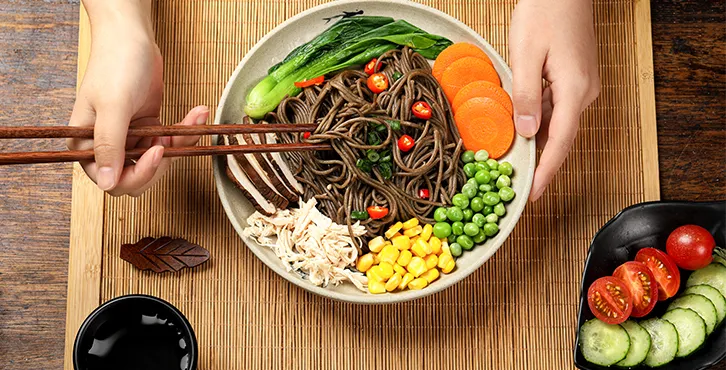udon soba noodles difference
The Difference Between Udon and Soba Noodles A Culinary Exploration
When it comes to Japanese cuisine, noodles play a crucial role and are celebrated for their unique textures, flavors, and versatility. Among the myriad of noodle varieties, two of the most popular are udon and soba. While they may appear somewhat similar at first glance, these two types of noodles are fundamentally different in many aspects, including their ingredients, texture, flavor, and culinary uses. This article delves into the differences between udon and soba noodles, helping you appreciate the distinct qualities that each brings to the table.
Ingredients and Preparation
The primary difference between udon and soba lies in their ingredients. Udon noodles are made from wheat flour, water, and salt, resulting in a chewy, thick noodle that is typically white in color. The dough is kneaded, rolled out, and cut into strands, creating the signature thickness that udon is known for. These noodles are usually served in hot soups or stir-fried dishes, absorbing flavors exceptionally well due to their dense texture.
On the other hand, soba noodles are made from buckwheat flour, which gives them a darker color and a slightly nutty flavor. While some soba noodles may include wheat flour to improve the texture and elasticity, authentic soba is often made from 100% buckwheat. This makes soba a gluten-free alternative, ideal for those with gluten sensitivities. The preparation involves mixing the buckwheat flour with water, kneading, and rolling it out, followed by cutting into thin strands.
Texture and Flavor
The texture of udon and soba noodles presents a significant contrast. Udon noodles are thick, soft, and chewy, providing a satisfying bite and hearty feel in dishes. Their relatively neutral flavor allows them to adapt well to various broths, sauces, and toppings, making them a versatile choice. Common udon preparations include udon soup with a rich broth made from dashi, soy sauce, and mirin, complemented by ingredients like tempura, green onions, or mushrooms.
udon soba noodles difference

Soba noodles, being thinner and more delicate, offer a distinctive mouthfeel that is both smooth and slightly firm. Their nutty taste is more pronounced than that of udon, adding dimension to a dish. Soba is often enjoyed chilled, served with a dipping sauce called tsuyu, which consists of soy sauce, mirin, and dashi. This method of serving contrasts with the typical hot presentation of udon. Additionally, soba can be enjoyed in hot soups, where its flavor still shines through.
Culinary Uses
Culinary uses for udon and soba noodles showcase their unique characteristics in different ways. Udon is frequently found in hearty comfort dishes, enjoyed during colder months. Popular udon dishes include kake udon (udon served in a simple soy-flavored broth), yaki udon (stir-fried udon with vegetables and protein), and nabeyaki udon (a hot pot dish with udon noodles and various garnishes).
Conversely, soba is celebrated for its versatility as well but shines in light, refreshing dishes. Apart from being served chilled, soba can be dressed with sesame sauce, or enjoy a cold salad tossed with seasonal vegetables. Soba is also commonly used in celebratory dishes, particularly toshikoshi soba, eaten on New Year's Eve as a symbol of prosperity and longevity.
Conclusion
In summary, udon and soba noodles each bring their unique characteristics to the culinary world. Udon, with its thick, chewy texture and rich, comforting flavors, appeals to those seeking a hearty meal. Meanwhile, soba's lighter, nuttier profile and versatility make it suitable for various preparations, from refreshing cold dishes to warming soups. Understanding the differences between these two beloved noodle types allows one to appreciate their roles in Japanese cuisine. Whether you prefer the comfort of a steaming bowl of udon or the delicate flavors of soba, both noodles offer a delicious taste of Japan's rich culinary heritage.
-
Unleash Your Inner Chef with Delectable Italian Pasta CreationsNewsAug.01,2025
-
Savor Health and Flavor: Irresistible Soba Noodles for Sale Await!NewsAug.01,2025
-
Nourish Your Body with Premium Organic Ramen - A Culinary Delight AwaitsNewsAug.01,2025
-
Elevate Your Dishes with Our Exquisite Kinds of Egg NoodlesNewsAug.01,2025
-
Dive into Flavorful Convenience with Our Ramen OfferingsNewsAug.01,2025
-
Discover Exquisite Types of Naengmyeon and Chilled Soba NoodlesNewsAug.01,2025
-
Is Whole Wheat Pasta Healthy?NewsMay.30,2025
Browse qua the following product new the we

















































































































